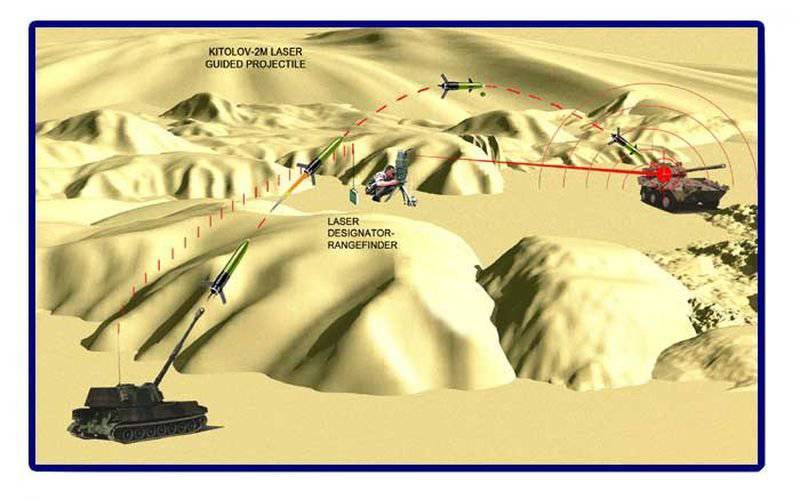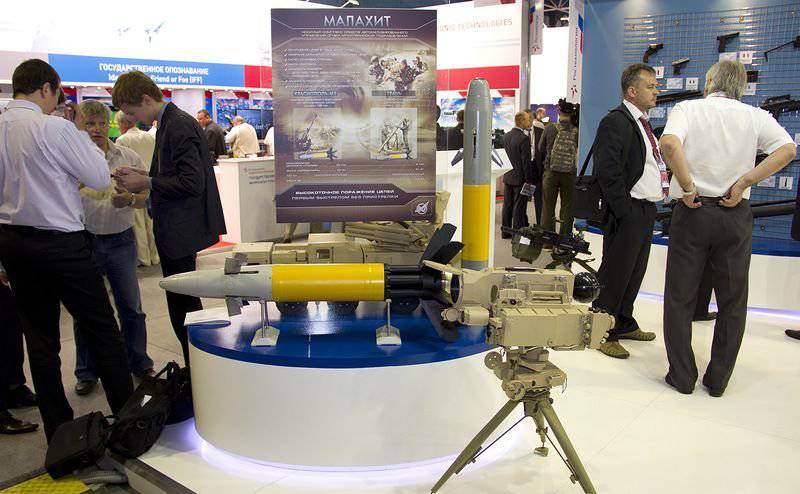122 mm KM3 "Kitolov-2M" artillery guided weapons complex
- position РЗСО;
- the position of artillery units;
- position of the deployment of mortars;
- position of ACS;
- infantry fighting vehicles;
- armored transporters;
- dugout structures;
- fortifications;
- crossings and bridges;
- boats and small surface ships;

Possibilities of combat use of KM3 "Kitolov-2M":
- the rate of fire three shots per minute without making a shooting at single targets;
- ensuring salvo fire from artillery systems (up to 4-x guns) at the same time for different purposes;
- maintaining effective fire in bad weather conditions and incomplete ballistic data for a distance of 7 kilometers using topographic data;
- getting into the weakly protected upper projection of the selected target.
The main advantages over standard art-ammunition - the production of fire without zeroing at specified targets from the firing position of the closed type. From the first shot, the Kitolov-2M is capable of hitting a target moving at a speed of 40 km / h without zeroing. The complex is capable of significantly increasing the effective accuracy of artillery units of defeating various targets and objects with the help of a semi-active laser homing head and the power of a high-explosive fragmentation warhead. When using the KM3 art complex, Kitolov-2М does not need special storage and maintenance conditions.
KM3 "Kitolov-2M" consists of:
- controlled high-explosive fragmentation projectile;
- made in the sleeve propellant charge;
Automated complex fire control "Malachite":
- laser rangefinder-pointer with TPV;
- commander console;
- communications;

Key Features:
- length - 119 centimeters;
- weight - 28 kilogram;
- range of destruction - 13.5 kilometers;
- probability of hitting - 0.8;
- laser illumination range fixed / moving target - 7 / 5 kilometers;
- The weight of the warhead - 12.2 kilogram;
- weight of explosive - 5.3 kilogram;
Automated set of fire control means “Malachite” of portable type performs detection and laser illumination of targets, orientation and topographical binding of the selected position for firing and the position of command and observation post, quick and accurate calculation of data for the start of firing.
Information sources:
- http://www.kbptula.ru/eng/kuwr/kit.htm
- http://www.izhmash.ru/rus/product/kitolov.shtml
Information